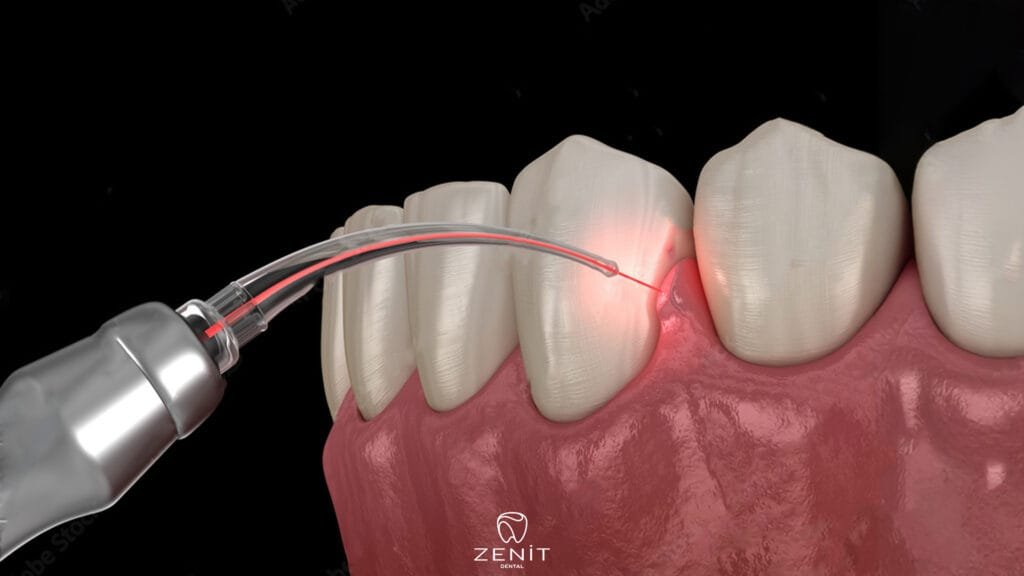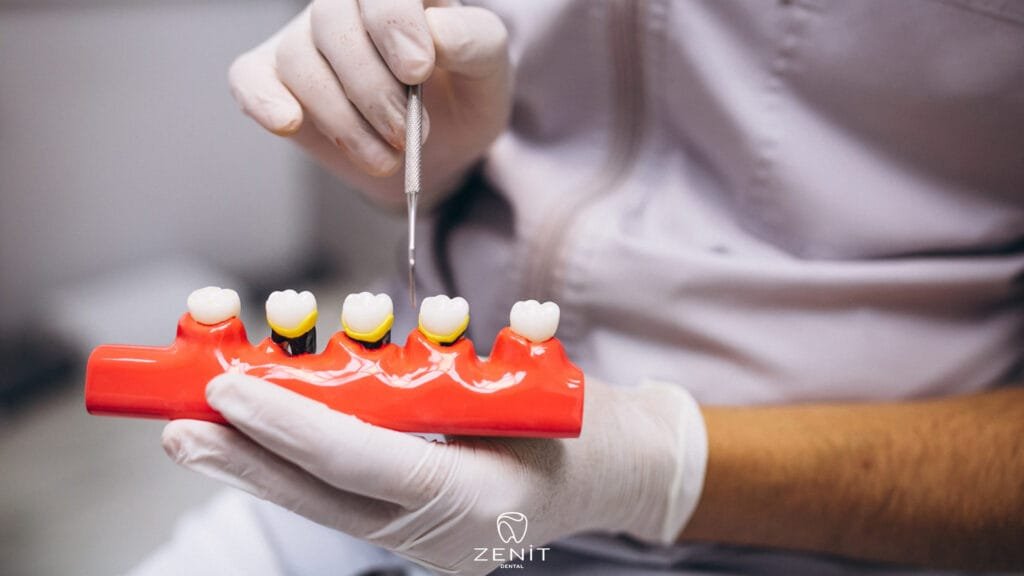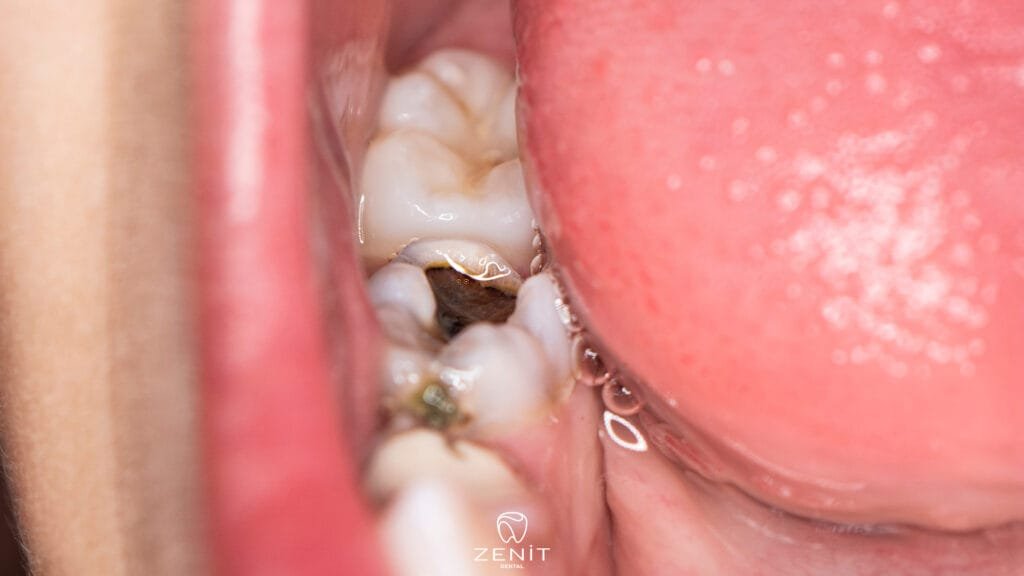Laser Procedures in Dentistry
In recent years, technological breakthroughs in dentistry have caused radical changes in both diagnosis and treatment processes. Thanks to these developments, patients feel less pain, and dentists can perform more sensitive and effective interventions. Laser technology is at the center of this transformation. The effectiveness of lasers has been scientifically proven not only in surgical procedures, but also in aesthetic interventions, treatment of gum diseases, elimination of sensitivity and intracanal sterilization.
With its advantages such as high accuracy, minimal tissue damage potential and fast healing time, laser applications have gone far beyond classical methods and have become one of the indispensable tools of modern dentistry. In this article, we will discuss in detail how laser technology is used in dentistry, in which cases it is preferred and the comfort it offers to patients.
Areas of Use of Laser in Dentistry
Laser technology is based on the principle of transmitting light energy to tissues to create a therapeutic effect. Lasers used in dentistry are generally divided into two groups: hard tissue (tooth enamel, dentin) and soft tissue (gum) lasers. Both groups are used in different treatments and provide high success.
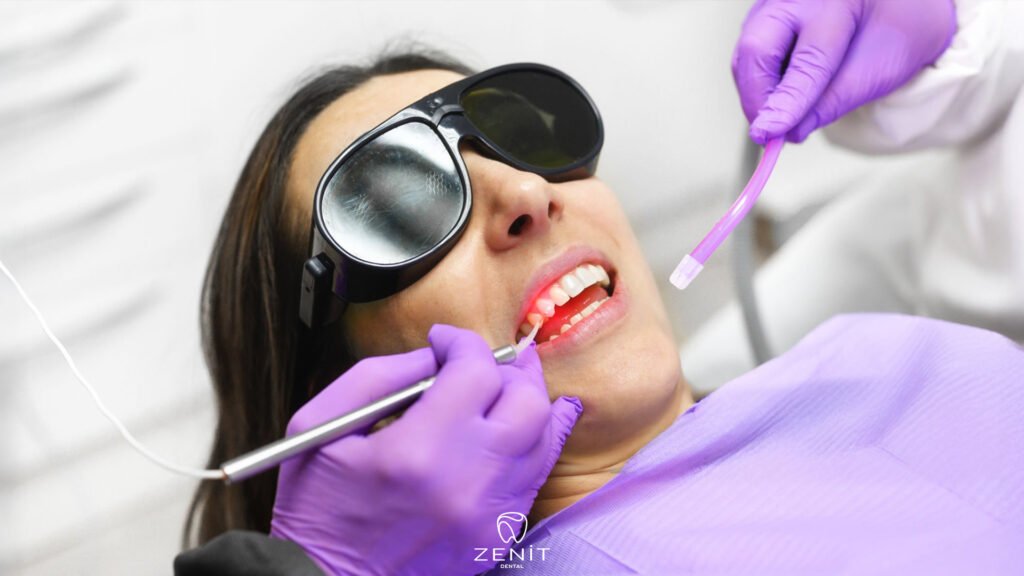
Intracanal Sterilization
One of the most important factors affecting the success of root canal treatments is the complete cleansing of the root canal from microorganisms. While this sterilization process is provided only with irrigation solutions in traditional methods, laser-assisted root canal treatment comes into play at this point. Laser energy reaches the depths of the canal and provides much more effective results in eliminating bacteria. Thus, the risk of infection is reduced, the treatment period is shortened and the failure rate is significantly reduced.
Temporomandibular Joint (TMJ) Pain
Jaw joint disorders are becoming more common, especially with the spread of habits such as teeth clenching and grinding (bruxism). This condition can cause pain and limited mobility in the jaw muscles and joint structure. Laser treatment helps provide pain control and muscle relaxation by applying low-level laser beams to the joint area. This method is non-invasive, does not require the use of medication and can provide very rapid relief.
Tooth Sensitivity: Laser Relief
Conditions such as gum recession or tooth cracks can leave the tooth surface exposed and cause sensitivity. Sudden stinging sensations may occur against cold, hot or sweet foods. Laser treatment offers an effective solution for such sensitivities. The laser beam applied to the tooth surface supports the formation of a protective layer called biofilm and isolates the nerve endings. Thus, it becomes less sensitive to external stimuli. This procedure provides significant relief even in a single session.
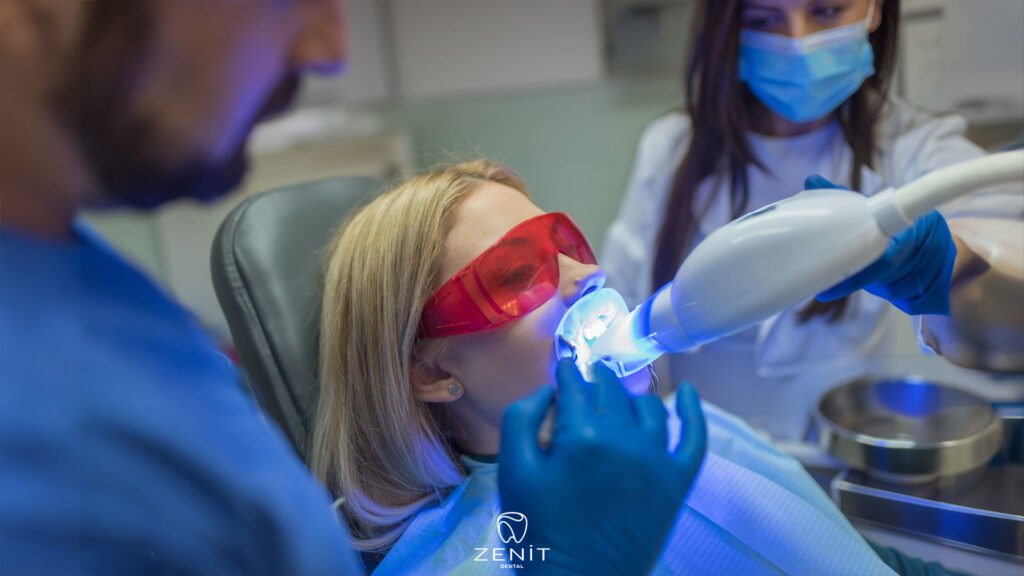
Teeth Whitening: Brighter Smiles
Teeth whitening, one of the most preferred procedures in aesthetic dentistry, has significantly increased its effect and permanence, especially in recent years, thanks to laser technology. While traditional whitening methods usually require the application of chemical agents for several sessions, this process is both shorter and provides more satisfactory results in laser-assisted whitening. During the application, a specially formulated whitening gel is carefully applied to the tooth surface.
Then, a laser beam with a specific wavelength activates this gel and quickly breaks down the discolorations accumulated in the tooth enamel. In this way, the teeth are lightened by several shades while the procedure time is shortened. In addition, the controlled heat of the laser provides effectiveness without damaging the tooth structure, and the feeling of sensitivity that may occur after the procedure is considerably less compared to traditional methods. This modern technique makes teeth whitening both safe and comfortable, allowing patients to smile with confidence.
Gum Aesthetics and Treatments
Laser technology offers extremely successful results not only on hard tissues but also on soft tissue procedures. The advantages of laser are particularly striking in the field of gum aesthetics and treatments. For example, when laser is used in gum shaping (gingivectomy) procedures, there is much less bleeding compared to classical methods and no need for stitches. Aesthetic problems, color changes or excess tissue in the gums can be corrected with precision with the help of laser.
In addition, laser beam is also used effectively in the treatment of painful lesions such as aphtha and herpes; it relieves pain, accelerates the healing process and minimizes the risk of infection. Since the surrounding tissues are not damaged during these applications performed with laser, swelling and discomfort after the procedure are also quite minimal. Thanks to all these features, laser turns gum aesthetics and treatment into a more controlled and comfortable experience for both the patient and the physician.

Advantages of Laser
Painless and comfortable procedure: The need for anesthesia is reduced or may be completely eliminated.
Fast healing process: Tissues are repaired faster thanks to the biostimulation effect of the laser.
Microorganism cleaning: Laser effectively eliminates bacteria, increasing treatment success.
Bleeding-free operation: There is almost no bleeding, especially in soft tissue procedures.
Less complications: Thanks to its non-invasive structure, complaints after the procedure are minimal.
Who Are Laser Applications Suitable For?
Laser treatments are suitable for many patient groups. However, they are particularly advantageous for individuals who are afraid of needles, resistant to treatment with classical methods, or have systemic disorders. However, they should be used with caution by pregnant women and those with certain photosensitivity disorders with the approval of a physician.

